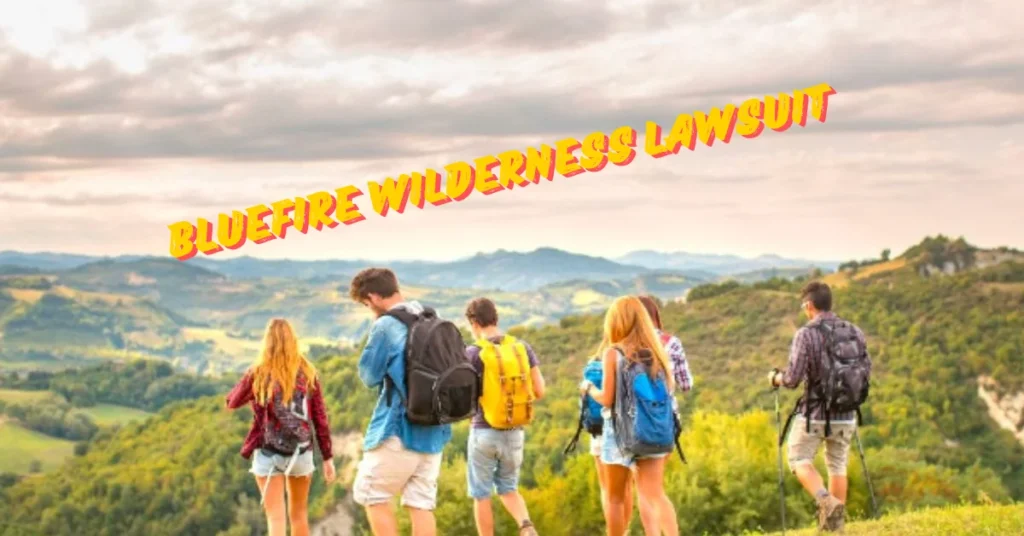Step into the world of wilderness therapy programs, where troubled teens find solace in the great outdoors. But amidst the serene backdrop of nature lies a recent legal battle that has sent ripples through the industry – the Bluefire Wilderness lawsuit. Let’s delve into this controversy, understand its implications, and explore how we can ensure safe and ethical practices in wilderness therapy for our youth.
Background on Bluefire Wilderness Lawsuit
Bluefire Wilderness, a well-known wilderness therapy program, was at the center of a legal storm when allegations surfaced regarding its treatment practices. Concerns were raised about the safety and well-being of participants in their care, prompting an investigation that led to the filing of a lawsuit against the program.
The lawsuit alleged negligence and misconduct on the part of Bluefire Wilderness, highlighting issues related to supervision, medical care, and overall program management. As details of the case emerged, it sparked debates within the industry about accountability and standards for wilderness therapy programs.
Families who had entrusted their troubled teens to Bluefire Wilderness were left grappling with uncertainty and seeking answers amidst the legal proceedings. The outcome of this lawsuit could potentially reshape regulations and practices within wilderness therapy programs across the board.
What is Wilderness Therapy?
Have you ever heard of wilderness therapy? It’s a unique approach that takes therapy out of the traditional office setting and into the outdoors. Picture this:
- Troubled teens immersed in nature
- Learning valuable life skills through experiential activities like hiking
- Camping
- Survival skills training
In wilderness therapy, participants are encouraged to step out of their comfort zones, face challenges head-on, and develop resilience. The natural environment serves as a powerful backdrop for self-reflection and personal growth. Away from distractions and technology, individuals have the space to connect with themselves and others on a deeper level.
Therapists in wilderness programs use nature as a therapeutic tool to help clients build confidence, improve communication skills, and learn to regulate emotions. This hands-on approach can be efficient for those struggling with behavioral issues or mental health concerns.
Wilderness therapy offers a holistic approach to healing that addresses the mind, body, and spirit. It’s not your typical therapy session – it’s an adventure filled with opportunities for transformation amidst the beauty of the great outdoors.
The Controversy Surrounding Wilderness Therapy Programs
Wilderness therapy programs have stirred up mixed opinions among experts and the public. Some view them as a transformative experience that helps troubled teens connect with nature and themselves. However, critics raise concerns about these immersive outdoor interventions’ lack of regulation and potential risks.
One critical controversy surrounding wilderness therapy programs is the level of oversight and accountability. With varying standards across different programs, ensuring the safety and well-being of participants can be challenging. Additionally, questions have been raised about the qualifications of staff members leading these expeditions and their ability to handle emergencies in remote locations.
Moreover, some wilderness therapy approaches have ethical considerations regarding isolation tactics or physical challenges. Critics argue that specific methods may border on harmful or abusive practices, emphasizing the need for clear guidelines to protect vulnerable individuals undergoing treatment in these settings.
Potential Implications of the Bluefire Wilderness Lawsuit

The Bluefire Wilderness Lawsuit has raised concerns and shed light on the potential nationwide implications for wilderness therapy programs. The lawsuit serves as a reminder of the importance of upholding ethical standards and ensuring the safety of participants in such programs.
One key implication is the need for increased transparency and oversight within wilderness therapy programs to prevent any potential misconduct or negligence. This includes thorough screening processes for staff members, clear communication with families, and regular monitoring of program activities.
Additionally, the lawsuit may prompt discussions around improving regulations and guidelines for wilderness therapy programs to protect better vulnerable individuals seeking help. It underscores the significance of proper staff training, adherence to industry best practices, and accountability at all levels.
Moving forward, wilderness therapy programs must prioritize participant safety above all else while also providing effective treatment interventions. This legal case serves as a wake-up call for the industry to reevaluate its practices and ensure that ethical standards are consistently upheld in these vital therapeutic settings.
Steps for Ensuring Safe and Ethical Wilderness Therapy Programs
Providers can take several steps to ensure safe and ethical wilderness therapy programs. First and foremost, thorough staff training is essential. Staff members should be well-versed in wilderness safety protocols, crisis intervention techniques, and ethical guidelines for working with vulnerable populations.
Additionally, regular program evaluations and assessments are crucial to identify any areas of improvement or potential risks. This includes routine checks on equipment, emergency response plans, and overall program effectiveness.
Clear communication with both participants and their families is also paramount. Transparency about the therapeutic process, expectations during the program, and follow-up support post-program can help build trust and ensure a positive experience for all involved.
Maintaining proper licensing and accreditation demonstrates a commitment to meeting industry standards and best practices in wilderness therapy. By diligently following these steps, wilderness therapy programs can uphold high standards of safety and ethics for the benefit of their participants.
Alternative Forms of Therapy for Troubled Teens
When traditional therapy approaches may not resonate with troubled teens, alternative forms of therapy can offer a fresh perspective. Art therapy allows adolescents to express themselves creatively through painting, drawing, or sculpting, tapping into emotions that words may not capture. Equine therapy involves interacting with horses to build trust and communication skills, fostering emotional growth in a unique setting.
Adventure therapy combines physical challenges like rock climbing or hiking with therapeutic interventions to promote personal development and self-discovery. Mindfulness practices such as yoga and meditation help teens cultivate awareness of their thoughts and feelings, promoting relaxation and stress management. Family therapy involving loved ones can address underlying dynamics contributing to the teen’s struggles.
By exploring diverse therapeutic options tailored to individual needs, troubled teens can find healing pathways beyond conventional talk therapy.
Conclusion
As we navigate the complexities of wilderness therapy programs in light of the Bluefire Wilderness lawsuit, it becomes apparent that multifaceted considerations are at play. The implications of this legal case ripple through the industry, prompting reflection and potential shifts in best practices.
Stakeholders must uphold safety standards and ethical guidelines within wilderness therapy settings. By prioritizing transparency, accountability, and continuous improvement, programs can strive to provide a secure environment for participants.
Exploring alternative forms of therapy for troubled teens may also offer valuable insights into effective intervention strategies. From equine-assisted therapy to adventure-based counseling, diversifying therapeutic approaches can enrich the support available to young individuals facing challenges.
In closing, thoughts on this evolving landscape, ongoing dialogue, and professional collaboration are essential for responsibly advancing wilderness therapy. Adapting to new information and perspectives ensures that programs evolve to prioritize client well-being above all else.
FAQs
Q: What was the Bluefire Wilderness Lawsuit about?
A: The Bluefire Wilderness Lawsuit involved allegations of negligence and mistreatment at a wilderness therapy program.
Q: Are all wilderness therapy programs unsafe?
A: Not necessarily. While some programs are criticized, many reputable ones prioritize safety and ethical practices.
Q: How can parents ensure their child’s safety in a wilderness therapy program?
A: Parents should thoroughly research programs, ask questions about staff qualifications and training, inquire about safety protocols, and seek feedback from other families.
Q: What are alternative forms of therapy for troubled teens?
A: Alternative therapies for troubled teens may include residential treatment centers, therapeutic boarding schools, individual therapy, group counseling, or adventure-based therapy programs that operate with strict guidelines and oversight.
Also read: bluefire wilderness lawsuit







One thought on “Bluefire Wilderness Lawsuit: Understanding the Implications”